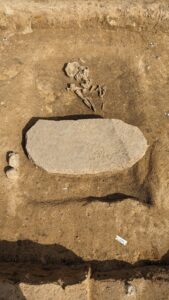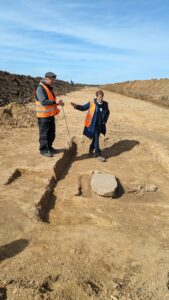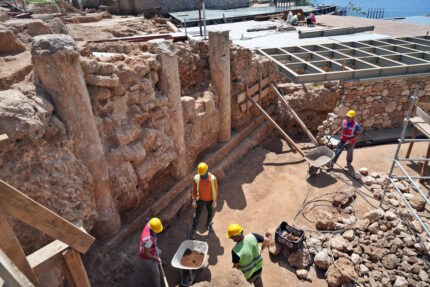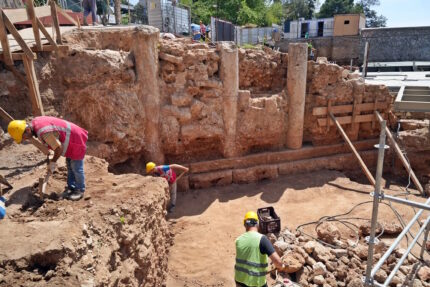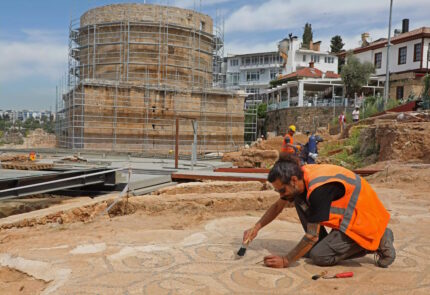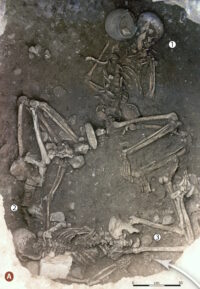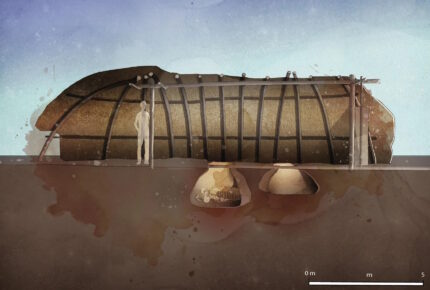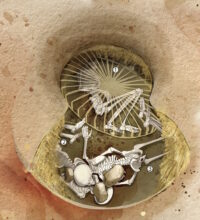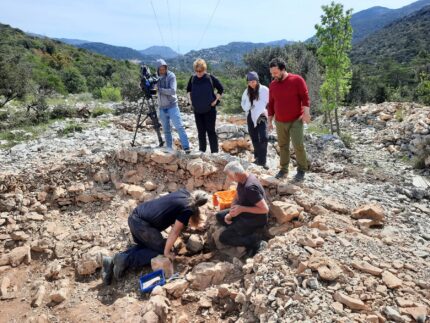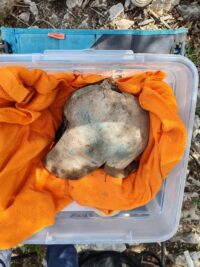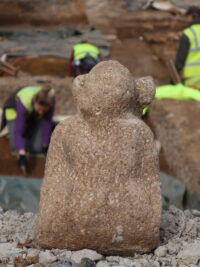 Excavations at the site of a Roman fort in Stuttgart-Bad Cannstatt have unearthed a heavily worn sandstone statue identified by the State Office for Monument Preservation (LAD) as a Romano-Germanic deity. The kneeling figure has a human head and arms, with hands placed on the hips and legs, but the legs are not human in form. They morph into the shape of a snake.
Excavations at the site of a Roman fort in Stuttgart-Bad Cannstatt have unearthed a heavily worn sandstone statue identified by the State Office for Monument Preservation (LAD) as a Romano-Germanic deity. The kneeling figure has a human head and arms, with hands placed on the hips and legs, but the legs are not human in form. They morph into the shape of a snake.
The LAD’s senior archaeologist, Dr. Andreas Thiel, explained: “The figure is a hybrid creature of the Roman-Germanic world of gods, a so-called ‘giant’.
As comparable finds show, the figure was once part of a giant Jupiter column. These monuments combine classical antiquity with probably Germanic beliefs: Jupiter, throwing lightning bolts, rides on his horse over a figure crouching on the ground, usually naked and bearded, as can be seen, for example, in a group from Hausen an der Zaber in the Heilbronn district .” However, the creature beneath the horse is often depicted in a pose that seems to be supporting the horse above him. “These groups of figures crowned high stone pillars placed in public squares. “Jupiter is probably depicted here as the weather god and master of the forces of nature,” says Thiel.
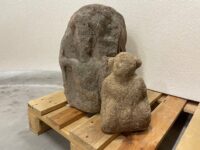 Archaeologists have been excavating the site in advance of the expansion of a municipal school. The Roman cavalry fort in the area was occupied from around 100 to 150 A.D., and that grew into a wider civilian settlement occupied until around 260 A.D. The site had been excavated before, and indeed, in a 1908 dig on the edge of the current excavation another part of the high pillar was discovered: a large sculpted base known as the “Four Gods Stone” because it depicted the Roman deities Juno, Minerva, Mercury and Hercules. It was found in a well at the site, and the water helped erode the fragile sandstone to the point that you can’t really make out the figures of the four gods.
Archaeologists have been excavating the site in advance of the expansion of a municipal school. The Roman cavalry fort in the area was occupied from around 100 to 150 A.D., and that grew into a wider civilian settlement occupied until around 260 A.D. The site had been excavated before, and indeed, in a 1908 dig on the edge of the current excavation another part of the high pillar was discovered: a large sculpted base known as the “Four Gods Stone” because it depicted the Roman deities Juno, Minerva, Mercury and Hercules. It was found in a well at the site, and the water helped erode the fragile sandstone to the point that you can’t really make out the figures of the four gods.
Today the Four Gods Stone is in the storage depot of the Württemberg State Museum as it’s not much of a show pony given all the wear and tear. Now that the giant has been found, however, the two pieces together increase each other’s archaeological significance exponentially.
Overall, it is a great stroke of luck that the newly found giant can be linked to a fragment that has long been stored in the Württemberg State Museum depot. This makes it possible to reconstruct a Jupiter giant column that was once placed in the area of an important street intersection in the Roman settlement of Bad Cannstatt. For archaeologists, this is another piece of the puzzle of the state capital Stuttgart’s rich Roman past.
